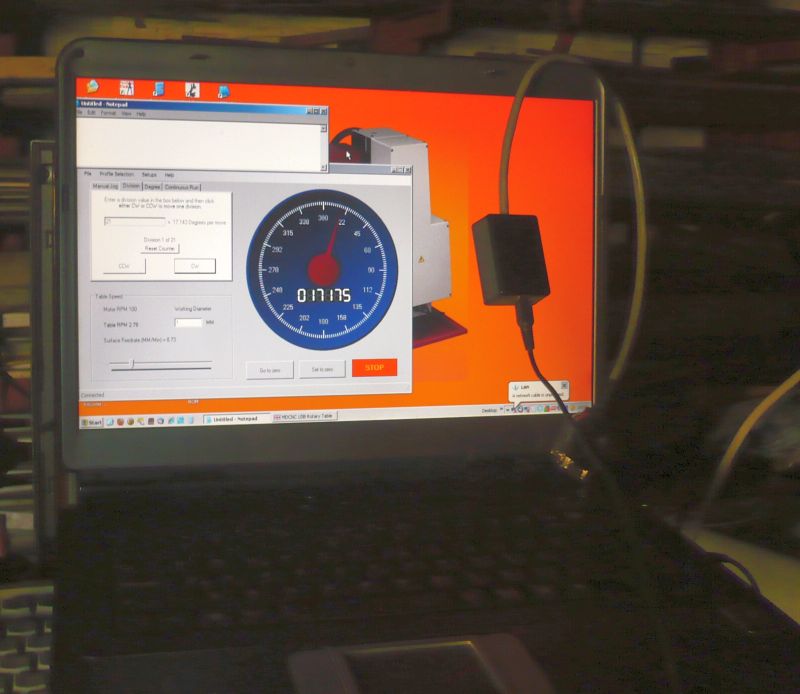- Joined
- Aug 25, 2007
- Messages
- 3,890
- Reaction score
- 715
Bogstandard said:Chuck,
I am truly surprised at how this has turned out, I honestly thought that the belt would flex too much, but you have proved me wrong.
Have you tried doing a bit of machining on the run?
John
Thanks, John. I doubt you are any more surprised than I am! I'm truly pleased with how well it works, and how convenient it is. I haven't tried any machining on the run. However, I do have the programming set up so I can adjust the speed of rotation as slow as I want.
The ER20 collet will only take work up to 1/2". My main purpose for building this was just for indexing for gear cutting, radial drilling, etc. And of course, the learning process. I've always wanted to be able to use stepper motors and to write my own programs. Now I know how easy it is. I'm kind of itching to get my hands on a NEMA 34 or even NEMA 42 stepper. I think something that powerful could really have some possibilities. Of course, those require a whole other level of driver electronics not to mention power supplies.
I've just ordered several different types of rotary encoders and gap sensors to make my own encoders. I see a lot of possibilities with those. Been thinking about an electronic gear hobber somewhere down the road...
Chuck
Chuck






























![DreamPlan Home Design and Landscaping Software Free for Windows [PC Download]](https://m.media-amazon.com/images/I/51kvZH2dVLL._SL500_.jpg)






























![MeshMagic 3D Free 3D Modeling Software [Download]](https://m.media-amazon.com/images/I/B1U+p8ewjGS._SL500_.png)